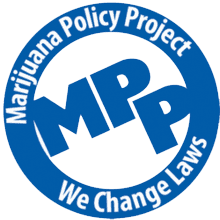
Cannabinoid Report: CBL
September 9, 2019Cannabicyclol (CBL) is a non-psychoactive cannabinoid found within the cannabis plant. It was discovered in 1964 by Korte and Sieper. Originally, they thought it resembled THC and was thus aptly named THC III. In 1967 the cannabinoid was isolated, given a revised structure, and renamed. While many cannabinoids are directly produced by CBG, CBL is instead derived from cannabichromene (CBC). When CBC is exposed to light, it eventually converts into CBL over time. When this conversion was first observed, the structure of CBL was revised once again. This observation also prompted questions as to whether CBL was a result of natural irradiation or if it was “an artifact formed in the crude extract.” In 1971, its correct structure was finally determined. Because CBL exists in larger amounts after having been harvested as opposed to during the reproductive phase, it was confirmed that CBL is not a natural substance, but an artifact produced by CBC during storage.
Most cannabis strains are very low in CBL concentration, which makes it difficult to extract. If a strain is high in CBL, it will also be high in CBC. Any high-CBL strain has likely been stored for several years, as it takes both time and light exposure to produce a substantial amount of CBL in the plant. In fact, in 2008, a team of researchers in China discovered a 2,700-year-old tomb containing a large amount of cannabis. After careful research, they discovered that the cannabis had greater quantities of both CBL and CBC than other cannabinoids, besides CBN. As well, it is common for CBL to be present in hashish, which is often stored for several months to several years.
CANNABICYCLOL LEGAL STATUS
CBL is not scheduled under the UN Convention on Psychotropic Substances. It is also not scheduled under the Controlled Substances Act in the United States.
CBL EFFECTS & CBL BENEFITS
CBL has been drastically understudied compared to better-known cannabinoids like THC and CBD. Even lesser-known cannabinoids like CBG and CBN have been studied more than CBL. CBL is extremely difficult to extract from cannabis, which accounts for the lack of research surrounding the cannabinoid. However, one study showed that CBL had virtually no effect in inhibiting the production of prostaglandins, whereas every other cannabinoid that was tested did have an inhibitory effect.
Despite the lack of knowledge about CBL, many scientists are proponents of the entourage effect. The entourage effect refers to the idea that the presence of all cannabis compounds (cannabinoids, terpenes, flavonoids, etc.) will create a synergistic effect that may produce more optimal health benefits than the presence of only a few compounds. If this theory is correct, then CBL may be an essential component in producing those beneficial effects. However, this is effectively just speculation.
Because almost nothing is known of CBL’s health benefits, there is also nothing known regarding CBL’s potential adverse effects.







